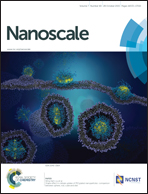Structure and energetics of graphene oxide isomers: ab initio thermodynamic analysis
Abstract
Graphene oxide (GO) holds significant promise for electronic devices and nanocomposite materials. A number of models were proposed for the GO structure, combining carboxyl, hydroxyl, carbonyl and epoxide groups at different locations. The complexity and variety of GO isomers, whose thermodynamic stability and formation kinetics depend on the applied conditions, make determination of the GO structure with atomistic precision challenging. We report high level theoretical investigation of multiple molecular configurations, which are anticipated in GO. We conclude that all oxygen containing groups at the GO surface are thermodynamically permitted, whereas the ‘edge’ positions are systematically more favorable than the ‘center’ and ‘side’ positions. We discuss a potentially novel type of chemical bond or bonding reinforcement in GO, which consists of a covalent bond and a strong electrostatic contribution from a polarized graphene plane. We observe and analyze significant modifications of the graphene geometry and electronic structure upon oxidation. The reported thermodynamic data guide experiments aimed at deciphering the GO chemical composition and structure, and form the basis for predicting GO properties required for nano-technological applications.


 Please wait while we load your content...
Please wait while we load your content...